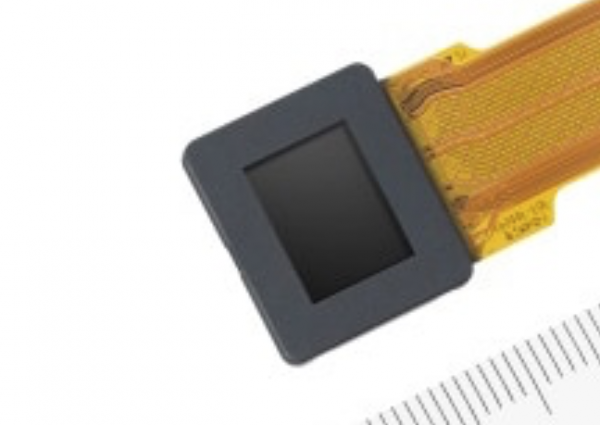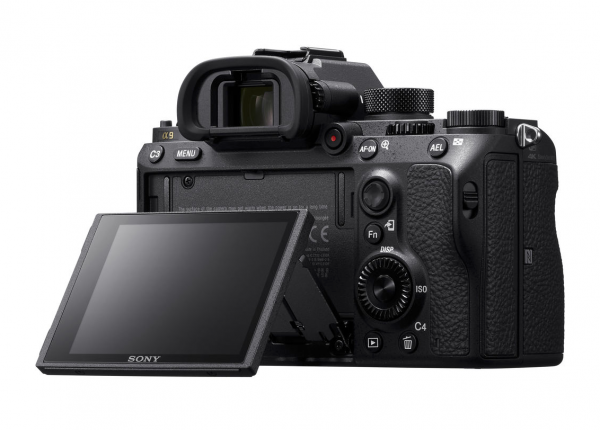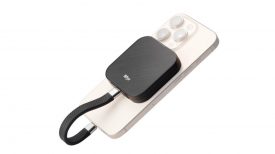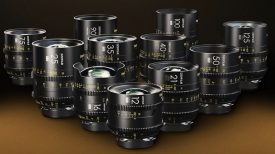
Sony have announced the upcoming release of a new OLED Microdisplay called the ECX339A which features a resolution of1600 x 1200 resolution, the highest in class for a 0.5-type. According to Sony, the new Microdisplay has the world’s smallest pixel pitch of 6.3μm that enables the ECX339A to have 1.6x higher resolution than the previous model. The OLED display uses a new drive circuit design that operates on half the voltage of the previous model. Frame rates of up to 240fps are also supported. Could this find its way into the a7SIII?

OLED Microdisplays are commonly found in a lot of todays digital camera EVFs. The reason they are used is because they offer high contrast, they are responsive, and they have a high color gamut. It’s good to see companies improving on EVF technology, because at the end of the day its what you use to judge everything fyou are shooting. Using a poor EVF is akin to wearing glasses that aren’t right for your eyes. Having a 1600 x 1200 resolution may not sound overly impressive, but you have to remember that these screens are tiny (1.3cm), so the bump up from 1280 x 960 is significant. The ECX339A is also extremely bright at 1,000cd/m2.

To put all this in perspective the QVGA ECX337A which is used in the a9 has a resolution of 1280 x 960 and can only support frame rates of up to 120fps. The new ECX339A has 5.6 million dots compared to the 3.7 million dots found in the current ECX337A. As a further comparison the slightly larger 0.7-inch $4930 USD DVF-EL100 OLED viewfinder that can be purchased for the Sony F5 and F55 uses a 1280 x 720 resolution screen with a 10,000:1 contrast ratio and isn’t that bright at 90 cd/m2. The ECX339A has a contrast ration that is claimed to be greater than 100,000:1.
Enhancing the resolution on microdisplays has traditionally presented problems such as deteriorating image quality due to decreased pixel pitch and inferior viewing angle properties. To try and improve on these problems Sony has optimised the transistor layout and made other improvements to address the issues associated with transistor miniaturization. The color filter has been deposited directly on the silicon substrate, reducing its distance from the light emitting layer, and the filter’s color array has also been modified. This helps to improve the viewing angle properties while still maintaining high resolution.
Going forward, Sony expects this high-definition OLED Microdisplay to be employed in a diverse range of fields and applications such as AR (augmented reality) and VR (virtual reality) head-mounted displays.
 Comparison of images on OLED Microdisplays
Comparison of images on OLED MicrodisplaysNew product (UXGA, left) and previous product (QVGA, right)
Main Features
- 1.High-resolution UXGA in a 0.5-type
The new product has achieved the world’s smallest pixel pitch of 6.3μm by leveraging Sony’s proprietary OLED display technology and miniaturization technology, and has superior resolution 1.6x higher than the previous model*1. Generally, transistor miniaturization results in characteristic variation and reduced withstand voltage. This product uses a Sony original compensation circuit and optimized layouts and process for each individual transistor to address these adverse effects. Furthermore, the color filter is deposited directly on the silicon substrate, reducing its distance from the light emitting layer, and the filter’s color array has been modified to secure the viewing angle properties while achieving high resolution.

| Model name | Sample shipment date | Mass-production shipment date (planned) | Sample price (excluding tax) |
|---|---|---|---|
| ECX339A 0.5-type OLED Microdisplay | January 2018 | November 2018 | 50,000 JPY |
Sony have been shipping sample units of the OLED Microdisplay since January and according to the company they will start shipping in mass by November this year. Whether we will see this new display used in the next generation of Sony alpha series cameras is still unknown. With a price of 50,000 JPY ($457 USD) it is unlikely to be used in lower end cameras and more likely to be found in future a7 and a9 models.
Key Specifications
| Name | ECX339A |
|---|---|
| Display Size | 0.5 type (12.6 mm Diagonal length) |
| Resolution | UXGA(1600×RGB×1200) |
| Pixel pitch | 6.3μm |
| Max. frame rate | 120 fps (progressive) / 240 fps (dual-line progressive) |
| Power consumption (200cd/m2) | 310 mW @ 60 fps (progressive) / 120 fps (dual-line progressive) |
| Video interface | LVDS/Sub-LVDS |
| Max. luminance | 1,000cd/m2 |
| Contrast | 100,000:1 or higher |
| Color gamut (u’v’) | sRGB ratio: 110% |





